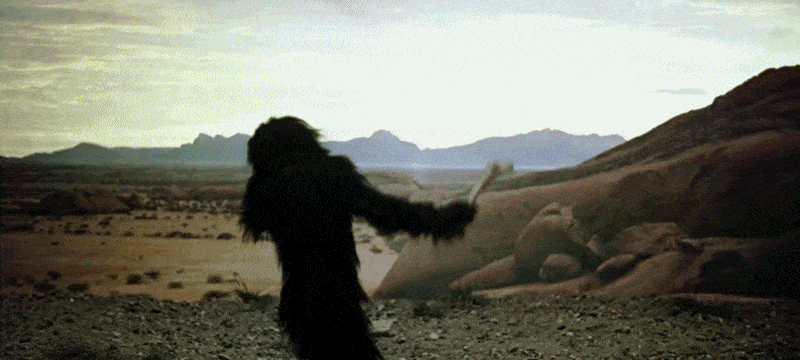american new wave
est. 1966 – 1984
In the late 1960s and throughout the 1970s, until mid 1980s, a cinematic revolution unfolded in Hollywood that would forever change the landscape of the film industry. American New Wave, also known as the New Hollywood or Hollywood Renaissance, marked a departure from traditional studio filmmaking and ushered an era of artistic innovation, social critique, and the emergence of a fresh generation of directors. This is arguably the most significant film movement that transitioned cinema into the modern age.
Origins of the American New Wave
For decades, the traditional studio system had reigned supreme in Hollywood, with major studios holding ironclad control over the filmmaking process. However by the mid 1960s, this dominance was gradually diminishing. The studio system’s once-unquestioned authority was now being challenged, setting the stage for a more diversified, dynamic, and artistically liberated cinematic landscape.
Audiences were yearning for films that mirrored the authentic human experience. The traditional, glossy studio productions no longer resonated with the evolving societal dynamics of the time. People craved stories that spoke to their realities, challenged their perceptions, and addressed the issues of the era, such as civil rights, the Vietnam War, and changing gender roles.
A pivotal moment in this transformation was the dissolution of the Production Code (popularly known as Hays Code – a set of industry guidelines for the self-censorship of content that was applied to most motion pictures released by major studios in the United States from 1934 to 1968), which had governed Hollywood’s content and morality standards for decades. This liberation from censorship allowed filmmakers the creative freedom to explore previously taboo subjects and tackle them head-on, resulting in films that were both artistically daring and socially relevant.

Characteristics of the American New Wave
American New Wave was characterized by the elevation of the director as the primary creative force behind a film, following the auteur theory. Filmmakers were granted unprecedented creative control, allowing them to charge their projects with unique artistic vision. This marked a departure from the traditional studio system, where directors had less influence over the final product.
The movement introduced narrative experimentation. Filmmakers frequently employed non-linearity, flashbacks and ambiguous endings, encouraging viewers to think critically, and engage with the film’s story in a more complex way. Topics such as the Vietnam War, civil rights, and the counterculture movement, were reflective of the turbulent sociopolitical landscape of the era. Character development were emphasized, often featuring antiheroes and complex, morally ambiguous protagonists. Inner struggles and personal journeys took center stage in the storytelling.
Filmmakers of the New Hollywood era embraced innovative and experimental visual style. The use of handheld cameras, unconventional angles, and naturalistic lighting contributed to the immersive and authentic feel of the films, which made visual storytelling a crucial aspect of the New Wave films.


Important Filmmakers And Films
Directors like Martin Scorsese, Stanley Kubrick, Francis Ford Coppola, and Robert Altman became synonymous with their distinctive styles, and their names were as important to the audience as the actors or the titles of their films.
The American New Wave era brought significant recognition to American cinema at prestigious ceremonies, consistently receiving nominations and awards at the major international festivals. For instance, Coppola’s “The Godfather” (1972) and its sequel “The Godfather Part II” (1974) won Best Picture at the Oscars, signaling a shift in the types of films that could attain critical acclaim and commercial success. Both films are considered masterpieces of the era, combining family drama with crime and power struggles in 20th century New York. Martin Scorsese’s “Taxi Driver” (1976), which won the Palme d’Or that year, showcased the exploration of a troubled character’s descent into darkness.
Steven Spielberg’s “Jaws” (1975) and George Lucas’s “Star Wars” (1977) not only redefined the blockbuster genre but also influenced modern cinematic trends. These films set the template for the summer blockbuster, which has become a major cultural event in the film industry today and led to the eventual downturn of the movement.

Legacy and Influence of the New Hollywood
The impact of the American New Wave extends well into the 21st century. It paved the way for auteur-driven filmmaking, embraced new storytelling techniques, and shattered taboos of its time. While the New Hollywood eventually gave way to the blockbuster era of the 1980s, its legacy continued to influence subsequent generations of filmmakers. Many, including Christopher Nolan, David Fincher, Paul Thomas Anderson, and Wes Anderson, draw inspiration from the era’s filmmaking techniques, narrative experimentation, and character-driven storytelling.
In conclusion, the American New Wave represented a period of extraordinary artistic achievement and cultural relevance for American cinema. It remains a pivotal chapter in film history, arguably the most influential film movement. It redefined the possibilities of storytelling and challenged the boundaries of what cinema could accomplish, leaving a legacy that continues to shape it to this day.

Refer to the Listed Films for the recommended works associated with the movement. Also, check out the rest of the Film Movements on our website.
